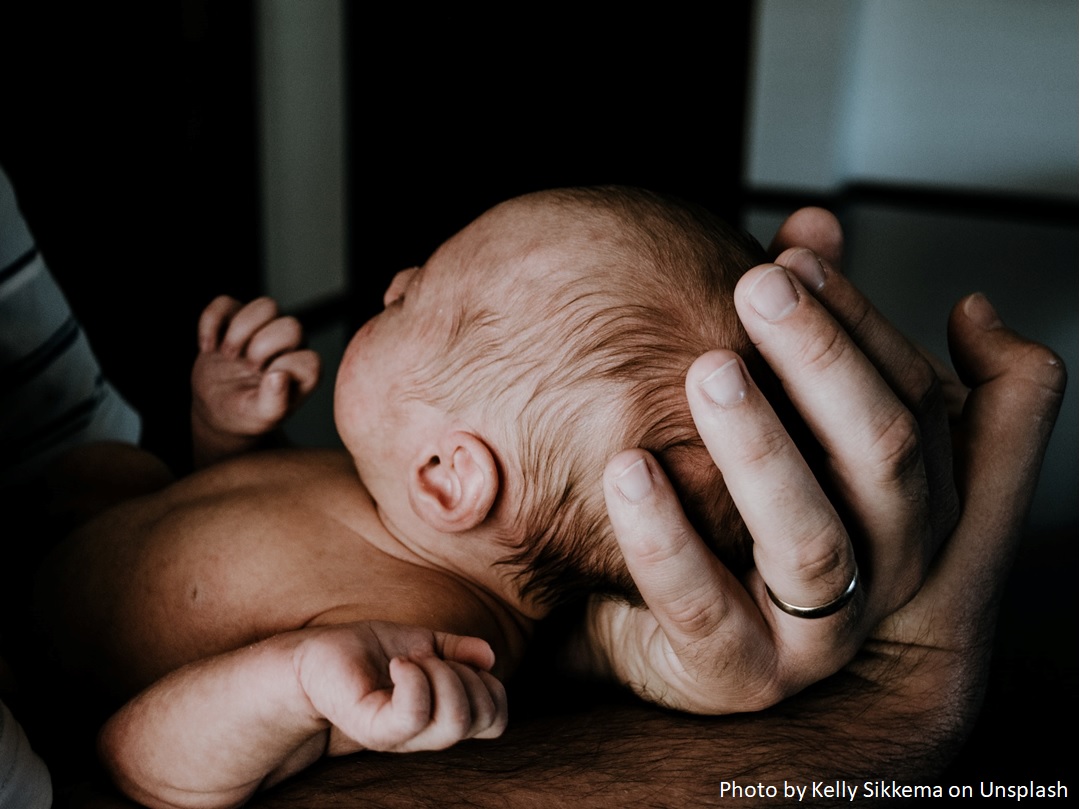Design and Validation of a Questionnaire about Risk Factors in Children with Cerebral Palsy
Diseño y validación de un cuestionario sobre factores de riesgo en niños con parálisis cerebral

This work is licensed under a Creative Commons Attribution-NonCommercial-NoDerivatives 4.0 International License.
Show authors biography
Objective. To design and validate, in its appearance, a questionnaire to collect information on risk factors in children with cerebral palsy.
Methodology. Descriptive, methodological study, which included a design phase and a phase of facial validation of a questionnaire. The latter was carried out through the participation of 43 mothers and 10 health professionals.
Results. According to Rutter's theoretical model around risk factors, a questionnaire was designed to collect information on pre- and perinatal conditions, which can be used as part of the documentation of the clinical history of children with cerebral palsy and for research processes. The facial validation of the instrument was carried out, whose results suggested the acceptance of 17 items and the reformulation of 12, equivalent to 41.4% of the totality of questions of the FR-PC Questionnaire.
Limitations. Sample size could have been bigger. In addition, not enough literature was found to allow us to compare our results with other studies.
Value. The product of this research is the RF-PC Questionnaire, a tool that facilitates the organization and integration of data from the clinical history of children with CP, for decision making.
Conclusions. The FR-PC Questionnaire is a clear and understandable tool to collect information on risk factors in children with cerebral palsy.
Article visits 1739 | PDF visits 49
- Rosenbaum P. Cerebral palsy: is the concept still viable? Developmental Medicine & Child Neurology [Internet]. 2017 May 2;59(6):564–564. doi: http://dx.doi.org/10.1111/dmcn.13418
- Rosenbaum, PL, Bernard D. The Continuing Evolution of ‘Cerebral Palsy. Annals of Physical and Rehabilitation Medicine. 2020 Oct;63(5):387–88. doi: https://doi.org/10.1016/j.rehab.2019.09.008.
- Graham HK, Rosenbaum P, Paneth N, Dan B, Lin J-P, Damiano DL, et al. Cerebral palsy. Nature Reviews Disease Primers [Internet]. 2016 Jan 28;2(1). doi: http://dx.doi.org/10.1038/nrdp.2016.5
- Jöud A, Sehlstedt A, Källén K, Westbom L, Rylander L. Associations between antenatal and perinatal risk factors and cerebral palsy: a Swedish cohort study. BMJ Open [Internet]. 2020 Aug;10(8):e038453. doi: http://dx.doi.org/10.1136/bmjopen-2020-038453
- Freire G, Shevell M, Oskoui M. Cerebral palsy: Phenotypes and risk factors in term singletons born small for gestational age. European Journal of Paediatric Neurology [Internet]. 2015 Mar;19(2):218–25. doi: http://dx.doi.org/10.1016/j.ejpn.2014.12.005
- Stoknes M, Andersen GL, Elkamil AI, Irgens LM, Skranes J, Salvesen KÅ, et al. The effects of multiple pre- and perinatal risk factors on the occurrence of cerebral palsy. A Norwegian register based study. European Journal of Paediatric Neurology [Internet]. 2012 Jan;16(1):56–63. doi: http://dx.doi.org/10.1016/j.ejpn.2011.10.004
- Schneider RE, Ng P, Zhang X, Andersen J, Buckley D, Fehlings D, et al. The Association Between Maternal Age and Cerebral Palsy Risk Factors. Pediatric Neurology [Internet]. 2018 May;82:25–8. doi: http://dx.doi.org/10.1016/j.pediatrneurol.2018.01.005
- Robaina Castellanos GR. Prenatal risk factors of cerebral palsy. Rev Cubana Obstet Ginecol. [Internet]. 2010 Jun [citado 2022 Dic 06];36(2): 173-187. Disponible en: http://scielo.sld.cu/scielo.php?script=sci_arttext&pid=S0138-600X2010000200015&lng=es
- Aliaga P, Villarroel J, Cossio N. La Charla Motivacional; una Estrategia para Abordar el Desconocimiento de Factores de Riesgo Ergonómico en un Supermercado Chileno. Ciencia y Trabajo . [Internet]. 2016 May-Ago;18(56):106-109. Disponible en: https://doi.org/10.4067/s0718-24492016000200005
- Portes JRM, Vieira ML, Crepaldi MA, More CL, Motta CCL. A criança com síndrome de Down: na perspectiva da Teoria Bioecológica do Desenvolvimento Humano, com destaque aos fatores de risco e de proteção. Boletim - Academia Paulista de Psicologia, [Internet]. 2013; 33(85), 446-464. Disponible en: http://pepsic.bvsalud.org/scielo.php?script=sci_arttext&pid=S1415-711X2013000200015&lng=pt&tlng=pt
- Aguiar Andrade E, Acle Tomasini G. Resiliencia, factores de riesgo y protección en adolescentes Mayas de Yucatán: elementos para favorecer la adaptación escolar. Acta. Colomb. Psicol. [Internet]. 1 de julio de 2012 [citado 6 de diciembre de 2022];15(2):53-64. Disponible en: https://actacolombianapsicologia.ucatolica.edu.co/article/view/266
- Himmelmann K, Ahlin K, Jacobsson B, Cans C, Thorsen P. Risk factors for cerebral palsy in children born at term. Acta Obstetricia et Gynecologica Scandinavica [Internet]. 2011 Jul 27;90(10):1070–81. doi: http://dx.doi.org/10.1111/j.1600-0412.2011.01217.x
- Włodarczyk k, Domagalska-Szopa M, Serrano ME. Risk factors of neurodevolopmental disorders in preterm infant. Fizjoterapia Polska. 2020;20(4); 190-197. Available from: https://fizjoterapiapolska.pl/en/article/czynniki-ryzyka-zaburzen-neurorozwojowych-u-dzieci-urodzonych-przedwczesnie/
- Bufteac Gincota E, Jahnsen R, Spinei L, Andersen GL. Risk Factors for Cerebral Palsy in Moldova. Medicina [Internet]. 2021 May 28;57(6):540. doi: http://dx.doi.org/10.3390/medicina57060540
- Roco Videla Á, Hernández Orellana M, Silva González O. What is the appropriate sample size to validate a questionnaire? Nutrición Hospitalaria [Internet]. 2021 july-august;38(4):877-878. doi: http://dx.doi.org/10.20960/nh.03633
- Corral Y. Diseño de cuestionarios para recolección de datos. Revista Ciencias De La Educación. 2010;20(36):152-168. http://servicio.bc.uc.edu.ve/educacion/revista/n36/art08.pdf
- Alonso González R, Bayarre Vea H, Artiles Visbal L. Construcción de un instrumento para medir la satisfacción personal en mujeres de mediana edad. Rev Cub Salud Publica. 2004;30(2). Disponible en: http://scielo.sld.cu/scielo.php?script=sci_arttext&pid=S0864-34662004000200006
- Fernández JM, Pedrero EF. Diez pasos para la construcción de un test. Psicothema. 2019;31(1):7-16. doi: https://doi.org/10.7334/psicothema2018.291
- Sarabia CM, Alconero AR. Claves para el diseño y validación de cuestionarios en Ciencias de la Salud. Enferm. Cardiol. [Internet]. 2019; 26(77): 69–73. Disponible en: https://enfermeriaencardiologia.com/media/acfupload/627a2069dc5b2_Enferm-Cardiol.-2019-26-77-Art_1-1.pdf
- Cañón M, Buitrago-Gómez Q. La pregunta de investigación en la práctica clínica: guía para formularla. Revista Colombiana de Psiquiatría [Internet]. 2018 Jul;47(3):193–200. doi: http://dx.doi.org/10.1016/j.rcp.2016.06.004
- Martínez Díaz JD, Ortega Chacón V, Muñoz Ronda FJ. El diseño de preguntas clínicas en la práctica basada en la evidencia. Modelos de formulación. Enfermería Global [Internet]. 2016 Jun 30;15(3):431. doi: http://dx.doi.org/10.6018/eglobal.15.3.239221
- Suarez-Acuña CE, Carvajal-Carrascal G, Serrano-Gómez ME. Escala de incertidumbre en la enfermedad–forma padres/hijos: validación de la adaptación al español. Enfermería Intensiva [Internet]. 2018 Oct;29(4):149–57. doi: http://dx.doi.org/10.1016/j.enfi.2017.12.002
- Tharaldsen G, Hollung SJ, Vik T, Andersen GL. High occurrence of perinatal risk factors and more severe impairments in children with postneonatal cerebral palsy in Norway. Acta Paediatrica [Internet]. 2022 Jan 31;111(4):812–9. doi: http://dx.doi.org/10.1111/apa.16240
- Chen A, Dyck Holzinger S, Oskoui M, Shevell M, Andersen J, Buckley D, et al. Cerebral palsy in Canadian Indigenous children. Developmental Medicine & Child Neurology [Internet]. 2020 Dec 13;63(5):614–22. doi: http://dx.doi.org/10.1111/dmcn.14776



